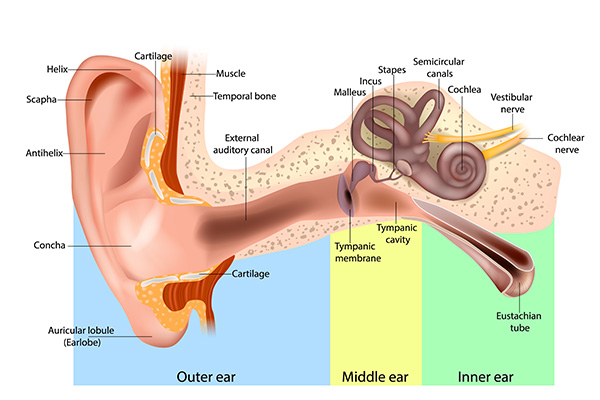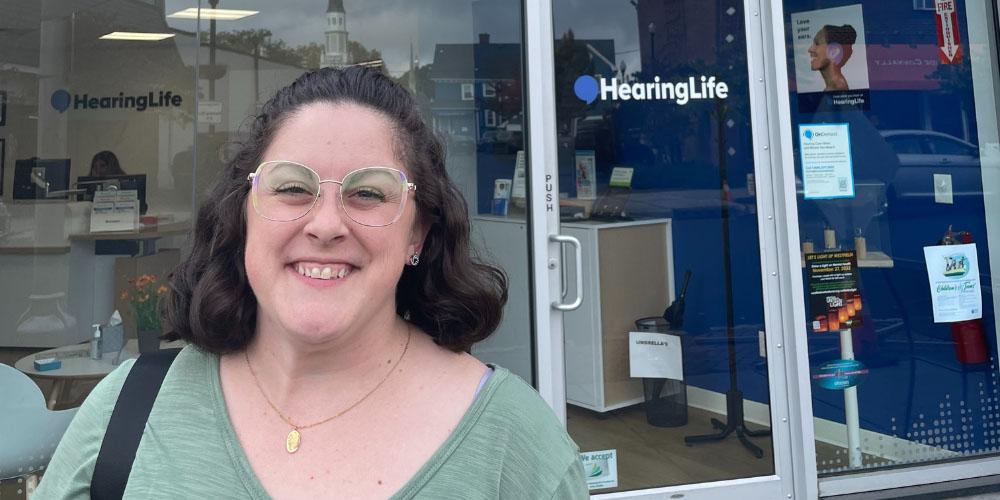We talk about hearing all the time on the HearingLife blog – from how hearing aids work to how they improve lives, tinnitus information, provider features and more. But do you know how the ear itself actually works? While the entire mechanism of hearing and processing sound is extraordinarily complex (complex enough that you can pursue a doctoral degree on the subject), we thought covering some basics on how the ear works would be helpful.

The Outer Ear
Sound travels as a wave – which is then funneled into the ear through the outer ear. The visible part of the ear on the sides of your head is called the auricle. The auricle is shaped in a way that can “catch” sound and funnel it into your inner ear from all around your head.
The Middle Ear
Once sound comes into the ear canal, it causes the ear drum to vibrate. These vibrations cause the malleus, incus and stapes bones to vibrate. These are collectively called the ossicles and are the tiniest bones in the human body! The ossicles further amplify the sound as it enters the inner ear.
The Inner Ear
Sound waves enter the inner ear and are sent into the cochlea, which is filled with fluid that moves around in response to the vibrations of the ossicles and ear drum. That movement is turned into electrical impulses by the 25,000 nerve endings inside the cochlea, which then travel through the auditory nerve to the brain.
The Brain
The final step is the brain. Without the brain to interpret these electrical impulses, sound would have no meaning to us. Learning what different sounds are is a big part of early childhood development for hearing children and maintaining the ability to understand sound is what wearing hearing aids is all about for those with hearing loss.
When hearing care professionals say that treating hearing loss sooner is better than later, it is because the brain can “forget” what different sounds are if it is deprived of them for long enough. Getting hearing aids after that point can be a much more frustrating experience for some people because the brain must work much harder to interpret and assign meaning to the everyday sounds of life.
This is also why our hearing care professionals want you to schedule regular check-ins after purchasing hearing aids. The first few weeks of hearing “new” sounds again can be disorienting and your provider can work with you to make you as comfortable as possible as you adjust.
If you’ve noticed you aren’t hearing as well as you used to, or if you’re over the age of 50, it’s time for a hearing assessment. Schedule one at your local HearingLife today and see how your ears are doing. Our caring experts are ready to help you!
The above is the interpretation of How the Human Ear Works: A Step-by-Step Guide provided by Chinese hearing aid supplier Shenrui Medical. Link https://www.srmcm.com/Blog/How_the_Human_Ear_Works_A_Step-by-Step_Guide.html of this article is welcome to share and forward. For more hearing aid related information, please visit Blog or take a look at our Hearing aids products















